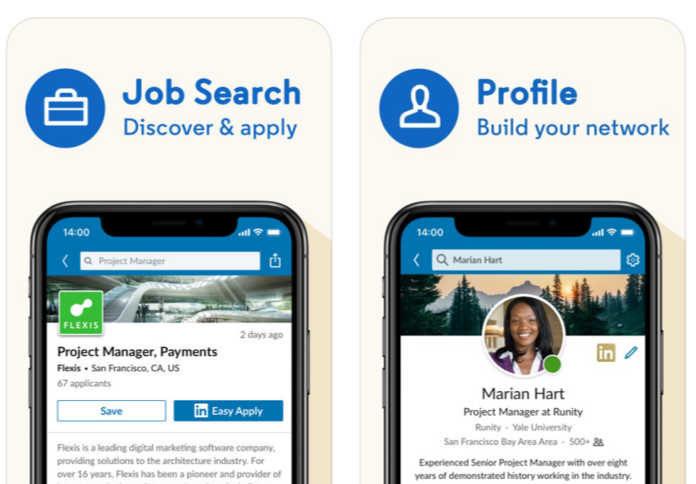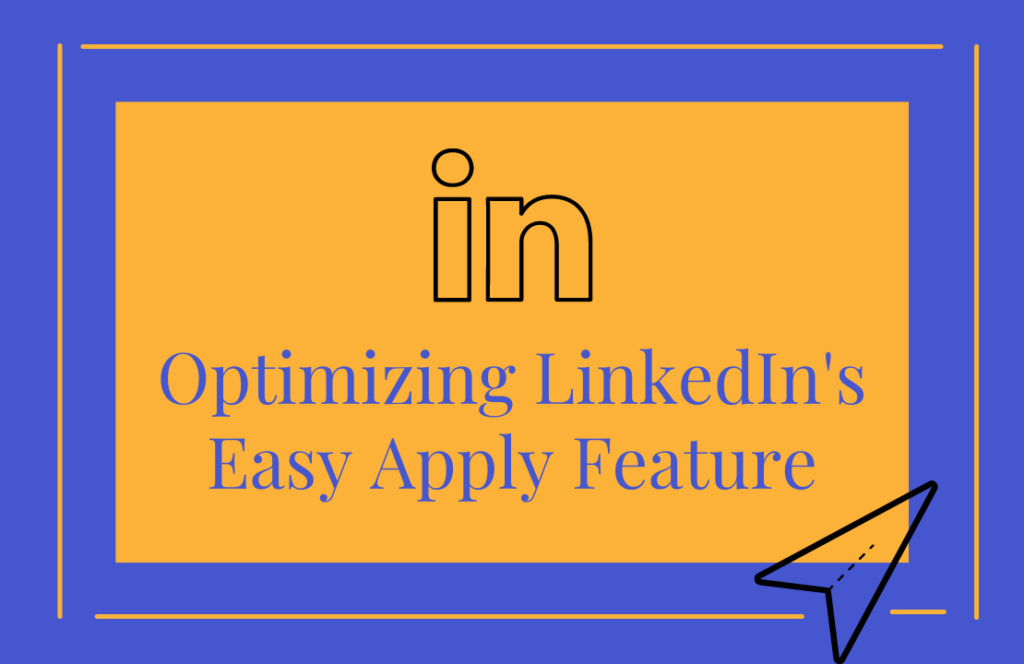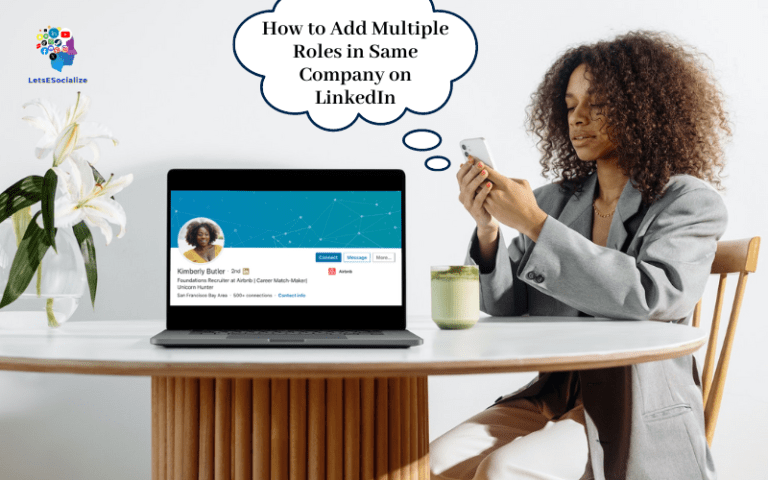As part of its focus on enabling employment and advancement, LinkedIn offers robust job search and application features like:
AI Job Matching: Personalized job recommendations based on user’s profile and activity
Easy Apply: One-click applications to jobs using existing LinkedIn profile data
But how effective are these capabilities actually in practice for both candidates looking for jobs and employers aiming to source great talent?
In this comprehensive guide, we’ll analyze the value, limitations and best practices for optimizing LinkedIn’s Job Matching and Easy Apply from both candidate and recruiter perspectives.
Table of Contents
Evaluating the Effectiveness of LinkedIn Job Matching for Candidates

LinkedIn Job Matching leverages AI to automatically recommend jobs tailored to each user based on facets like profile, skills, interests, and activity. But does this personalization deliver results for job seekers?
Let’s weigh the pros and cons:
Pros of LinkedIn Job Matching for Candidates
Relevant Opportunities
The AI considers existing profile data – experience, skills, education, etc. to suggest opportunities well aligned with the candidate’s background. This saves effort vs browsing generic listings.
Custom Fit
Matching evolves as users update profiles or engage in new content. The algorithm dynamically adapts recommendations to a candidate’s ever-changing career evolution rather than static matching.
Surface New Options
Candidates discover new sectors, specializations, and employers they may lack awareness of beyond the usual opportunities they manually seek out. Expands horizons.
Fast Application
Matched jobs easily enable one-click Easy Apply. Reduces typical hassles of assembling, and customizing application documents for each opening. Quicker path to submit candidacy for best-fit roles.
Also Read – NBA Twitter Melts Down After Wild Overtime Jazz-Pistons Thriller: “Game of the Year” Claims Explode
Limitations of LinkedIn Job Matching for Candidates
Not Fully Comprehensive
The matching relies on public LinkedIn data so can miss openings promoted exclusively via other channels like company career sites, niche job boards, or employee referrals.
Harder to Stand Out
Opportunities suggested to candidates are likely suggested to all other matching candidates as well. This leads to more peer competition once applying via Easy Apply. Harder for applicants to differentiate from pack.
Quality Control Lacking
Unlike curated marketplaces like FlexJobs with stringent employer screening, any employer can post roles on LinkedIn with minimal vetting. This leads to spam, MLM schemes, and fake job postings mixing with authentic openings.
Visibility Bias
Opportunities at awareness-challenged but high-quality employers still building their brand may get overlooked by the algorithm favoring high visibility large brands – undeservedly amplifying the “rich get richer” dynamic.
So in summary, while LinkedIn Job Matching does alleviate some job search efforts thanks to personalization, candidates should still incorporate proactive search and engage networks to unlock the full spectrum of potential fits. Relying solely on Matching risks missing hidden gems or better fits awaiting discovery with some manual digging.
Evaluating the Effectiveness of LinkedIn Easy Apply for Candidates

Beyond just surfacing relevant openings, LinkedIn also enables the quick one-click application to those jobs via Easy Apply leveraging existing profile data. But does this accelerate candidacy effectively?
Pros of LinkedIn Easy Apply for Candidates
Speed & Convenience
Applying becomes much easier without the hassles of separately formatting resumes and inputting information already reflected in a LinkedIn profile. Fast-tracks application submission.
Apply Broadly
The low-friction process means candidates can spray and pray to a wider breadth of openings rather than only selectively applying based on bandwidth to customize documents. Wider net.
Build Referral Relationships
Easy Apply prompts users to leverage network connections at target companies for referral advantage. Unlocks warmer application pathway.
Cons of LinkedIn Easy Apply for Candidates
Lacks Differentiation
With everyone leveraging the same Easy Apply approach for a given role, harder for any one candidate to stand apart from the pack with customization and personal branding. Blends into the swarm.
Qualification Unclear
Unlike submitting tailored resumes and cover letters, Easy Apply makes it nearly impossible for candidates to showcase aligned qualifications on key criteria upfront. Requires backend screening by employers.
Still Manual Follow-up
While Easy Apply expedites submitting candidacy, the heavy lifting of following up and nurturing applications relies solely on candidates. Still, significant manual effort chasing down responses rather than instant feedback.
So for candidates, Easy Apply does enable mass application velocity but the payoff still depends on sufficient follow-up effort and personal branding to build actual relationships behind each application.
Optimizing Job Search Experience As a Candidate
Given LinkedIn’s Job Matching and Easy Apply value but also limitations – here are some best practices for candidates to optimize:
Multi-Channel Search
Combine tapping Matching with also directly applying for openings found via company sites, niche boards, and employee referrals.
Customize Select Applications
Easy Apply widely but also spend time personalizing and formatting polished submissions for true top priority “dream job” openings.
Follow Up Diligently
Ensure systematic application tracking and prompt follow-up communication on every single submission made via Easy Apply to advance conversations. Don’t just apply and forget.
Showcase Differentiation
Make sure profile spotlight skills, value prop, and cultural elements align to sought roles quickly visible to reviewers even without custom materials tailored per application.
So overall leveraging LinkedIn’s job tools as part of a holistic process yields the best experience rather than fully relying on Matching and Easy Apply alone.
Evaluating LinkedIn Easy Apply for Employers
The story on LinkedIn’s application features isn’t one-sided. The other key stakeholders are employers aiming to source great talent. How does Easy Apply deliver from their recruiting perspective?
Pros of LinkedIn Easy Apply for Employers
High Application Volume
Easy Apply drastically amplifies applicant flow from qualified prospects already active on the platform who submit candidacies with one click. Significantly expands talent pipeline beyond legacy process requiring fuller applications.
Rich Candidate Insights
Unlike traditional applicant tracking systems that only provide limited inputs, Easy Apply gives recruiters full LinkedIn profile data context on each candidate’s full skills, experience qualifications, and cultural indicators enabling more informed screening.
Targeted Reach
Employers can selectively enable Easy Apply just to followers or contacts of existing employees. This taps a warmer candidate pool vs fully open self-selected inbound applicants from broad awareness job boards. More alignment likelihood.
Cons of LinkedIn Easy Apply for Employers
Low Commitment
The incredibly low friction application process means candidates submit readily but don’t necessarily have deep interest or intent resulting in warmer inbound leads but cooler candidate commitment.
Limited Custom Data
While Easy Apply gives recruiter’s candidate’s LinkedIn profiles, they miss customized applicant inputs like tailored resume narratives, cover letters, etc that would convey deeper motivations. Need to screen further.
Still Manual Review
The one-click influx of applicants from Easy Apply doesn’t automatically qualify as best fits. Still requires resource-intensive human review of profiles to manually filter quality inbound applicants from under and over-qualified mismatches.
So in summary – Easy Apply significantly expands candidate pipeline breadth efficiently thanks to tapping a rich LinkedIn talent pool. But relevance screening, outreach customization, and nurturing remain manual lifts for employers rather than fully automated sourcing.
Also Read – What are you doing to improve your interviewing skills?
Optimizing Recruiting Experience With Easy Apply

Given the tradeoff of volume but added heavy lifting, here are some recruiter best practices to optimize managing Easy Apply:
Automate Screening Rules
Set rules to auto-advance only candidates meeting key profile criteria into the next stages. Automates sifting Easy Apply volume.
Require Custom Questions
Have mandatory customized questions for prospects even in Easy Apply to add info beyond just LinkedIn data. Gets commitment.
Tracking & Nurturing
Ensure applicant tracking system to systematically advance prospects post apply. Automated future flows for different stages maintain engagement.
Target Strategically
Limit Easy Apply visibility only to audiences where volume to relevancy payoff merits, like followers of employees and talent pool sources. Avoid fully open self-selection.
Overall, Easy Apply delivers volume but also influx management overheads. Alleviate through automation, customization, and strategic targeting to curate, screen, and advance best matches for role priorities.
Key Takeaways on Optimizing LinkedIn Job Features
Here are some core things to keep in mind to get the most value from LinkedIn Job Matching and Easy Apply:
For Candidates
- Provides added visibility to opportunities but incorporates multi-channel search rather than relying completely on Matching
- Easy Apply enables wider applications but focuses efforts on priority targets and follows up diligently
- Customize individual touches for true dream roles while easily applying at scale for volume
For Employers
- Easy Apply gives volume but requires added downstream vetting to filter applicant quality
- Leverage automation, and custom application components to curate prospects
- Strategically limit just to audiences like employees’ networks rather than broad posting
The key is fit-for-purpose optimization. Easy Apply works best for entry to mid-career roles where volume over precision recruiting fits hiring needs.
For specialized senior-level searches or niche capability needs – supplementing with traditional customized sourcing often prevails.
Align approach based on specific hiring priorities beyond the one-size-fits-all use of LinkedIn job features.
Hope this gives you clarity on how to optimize LinkedIn’s Job Matching and Easy Apply capability to your situation’s advantage as either a candidate or recruiter!






